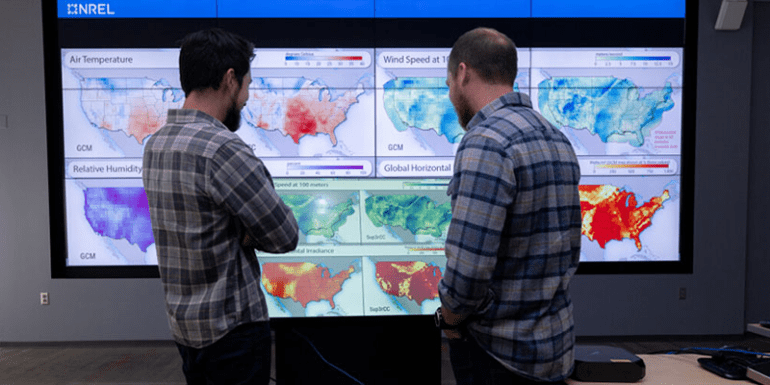- Sup3rCC, developed by NREL, enhances climate data resolution for predicting the impacts of renewable energy.
- The model uses advanced machine learning, accelerating data generation by 40 times.
- It increases spatial resolution by 25 times and temporal resolution by 24 times.
- Sup3rCC bridges the gap between energy planning and climate research, aiding informed decision-making.
Main AI News:
In the global transition towards renewable energy sources such as wind and solar power, anticipating the impact of climate change on these resources is paramount. The increasing frequency of extreme weather events poses a significant challenge for energy planners in accurately forecasting future energy demands. Despite available data, its granularity falls short in illustrating the precise implications of climate change on renewable energy infrastructure.
Recognizing this critical gap, the National Renewable Energy Laboratory (NREL) has pioneered an innovative solution: Sup3rCC. Short for Super-Resolution for Renewable Energy Resource Data with Climate Change Impacts, Sup3rCC is an open-source machine learning model designed to simulate future climate scenarios and their repercussions on renewable energy resources.
What sets Sup3rCC apart is its unparalleled ability to enhance the resolution of climate data dramatically. Unlike conventional methods, Sup3rCC can produce detailed and precise insights at an accelerated pace, outpacing traditional techniques by a staggering factor of 40. This swift generation of data enables energy planners to access comprehensive information regarding forthcoming climate conditions promptly.
The model achieves this feat by amplifying the spatial resolution of climate data by 25 times and elevating the temporal resolution by 24 times. Consequently, Sup3rCC furnishes intricate details on climate conditions specific to locations and timeframes, empowering energy planners with invaluable insights into the anticipated impacts on renewable energy generation.
By facilitating the simulation of future climate conditions, Sup3rCC serves as a pivotal link between energy planning endeavors and climate research initiatives. Its integration into modeling frameworks empowers energy planners to make well-informed decisions, ensuring the resilience and sustainability of future energy systems.
Conclusion:
The introduction of Sup3rCC marks a significant advancement in renewable energy planning, providing unparalleled insights into the impact of climate change on energy resources. This innovative tool empowers energy planners to make informed decisions, ensuring the sustainability and resilience of future energy systems amidst evolving climatic conditions. Businesses operating in the renewable energy sector should leverage Sup3rCC to optimize their strategies and adapt to the changing landscape of climate-related challenges.

